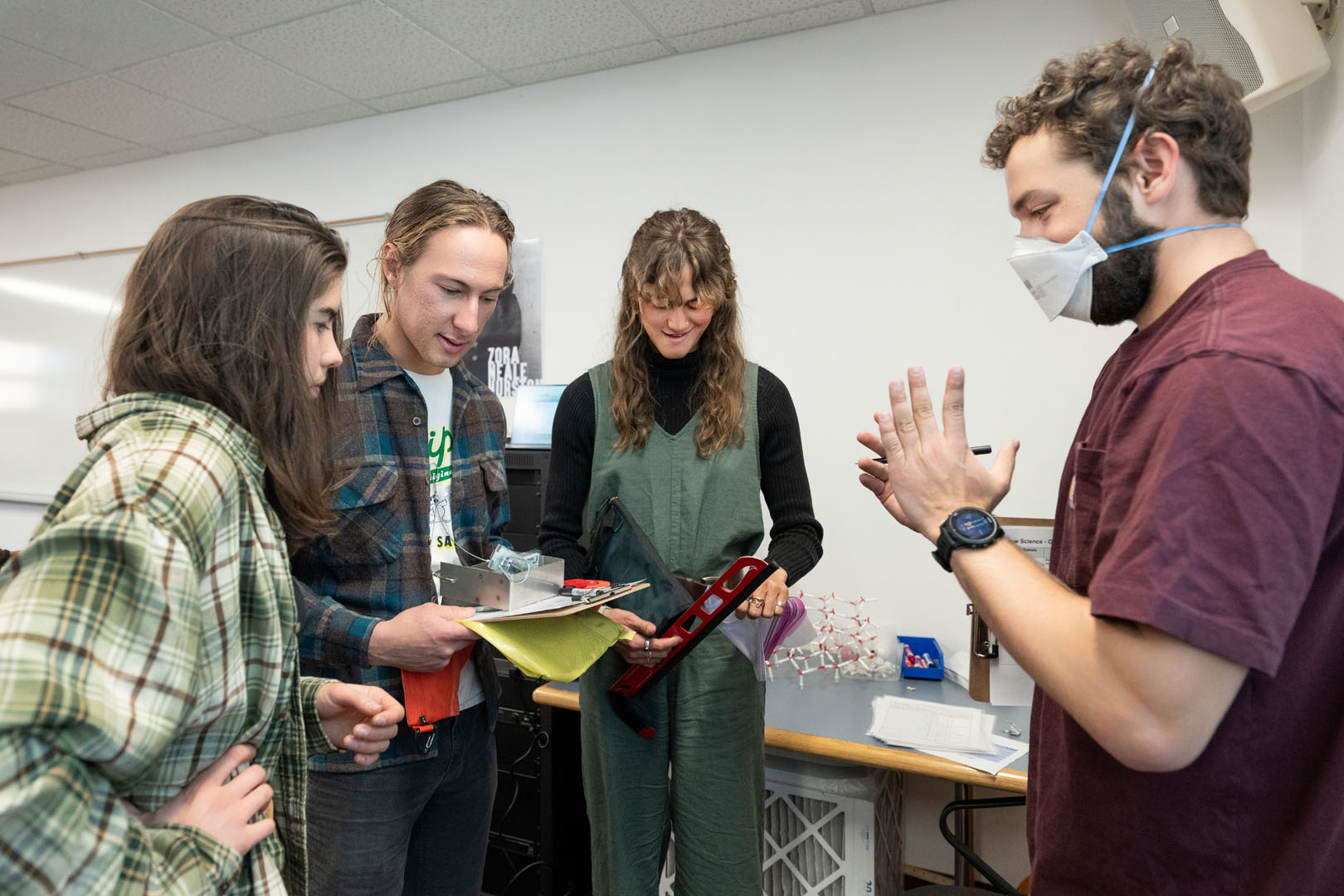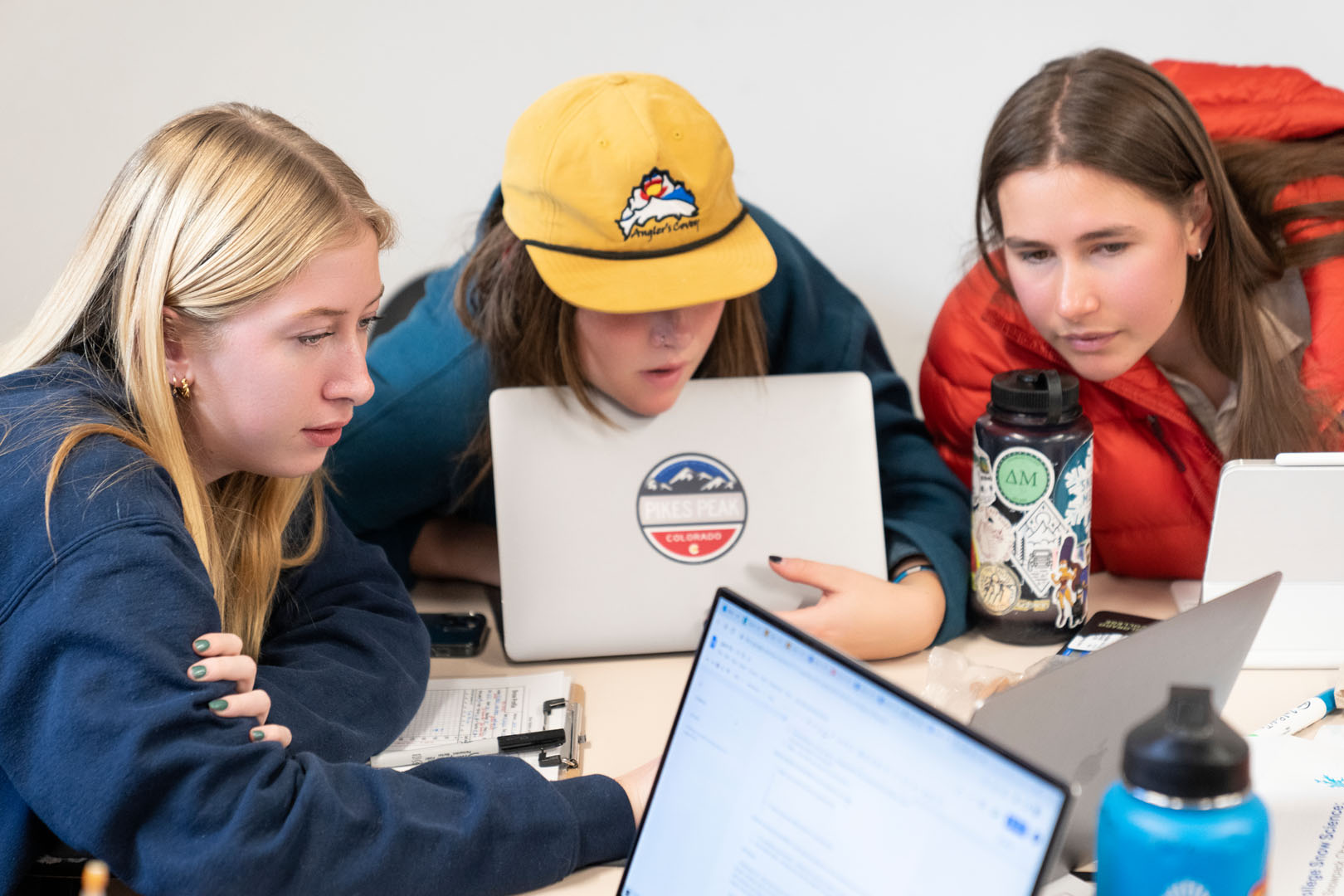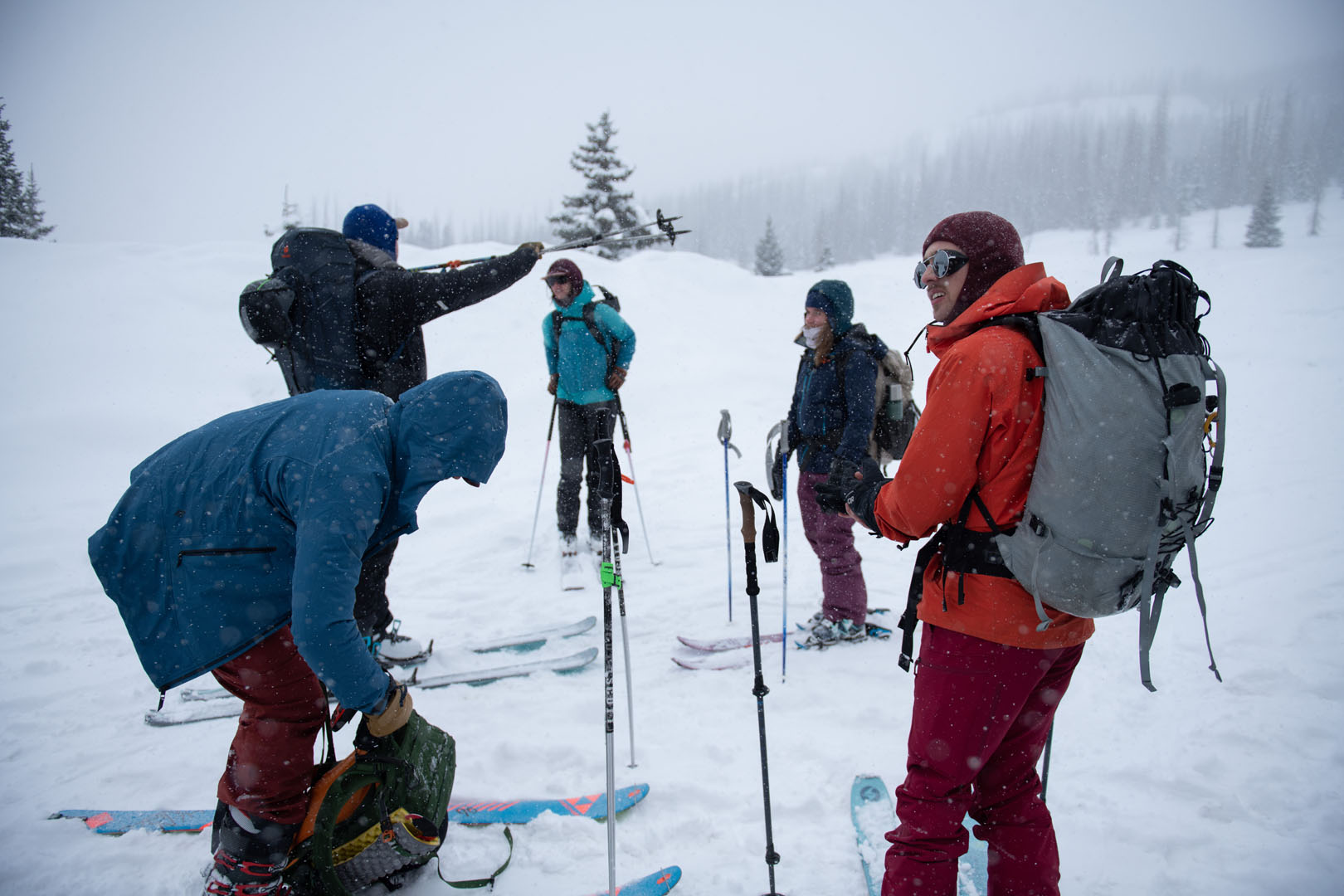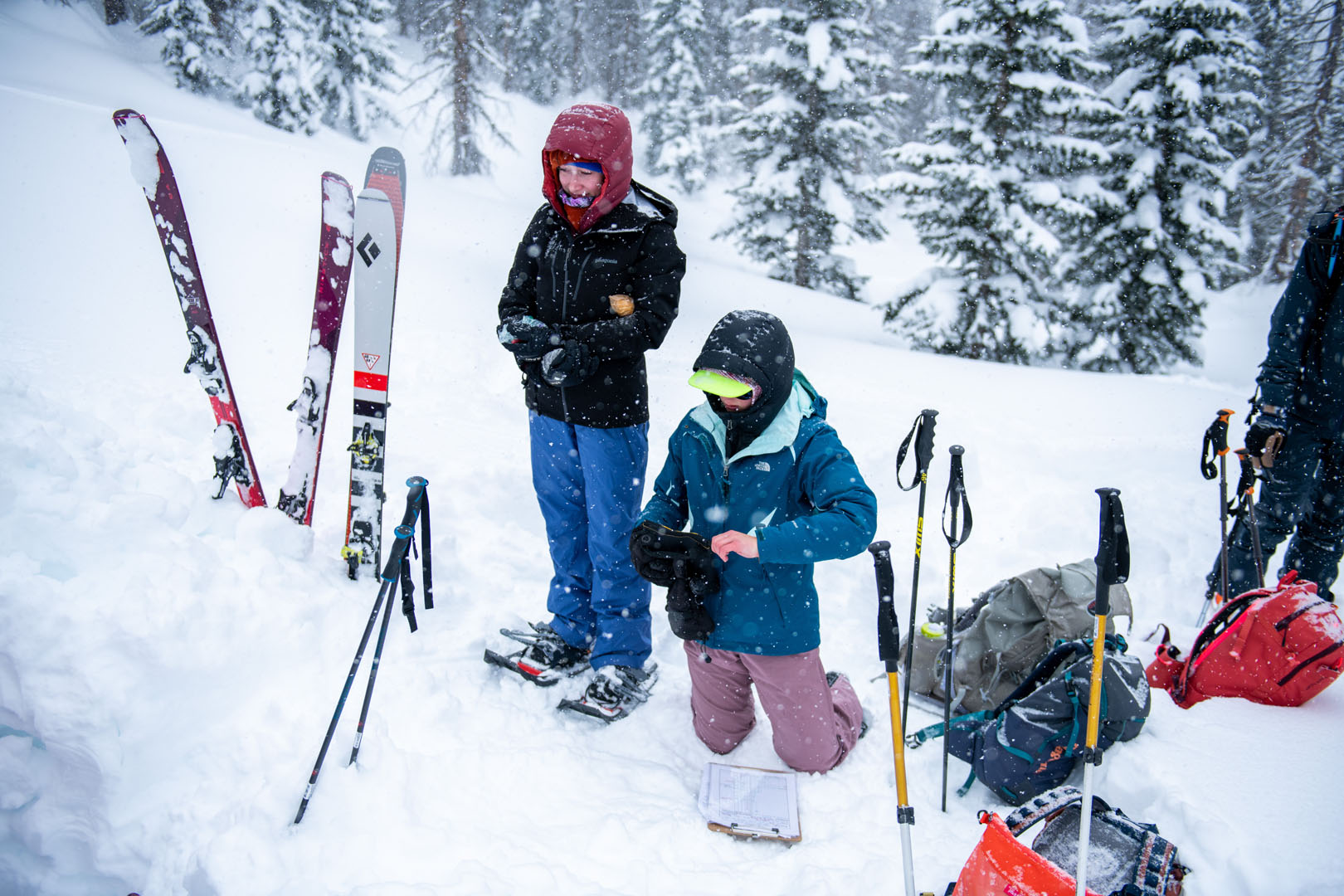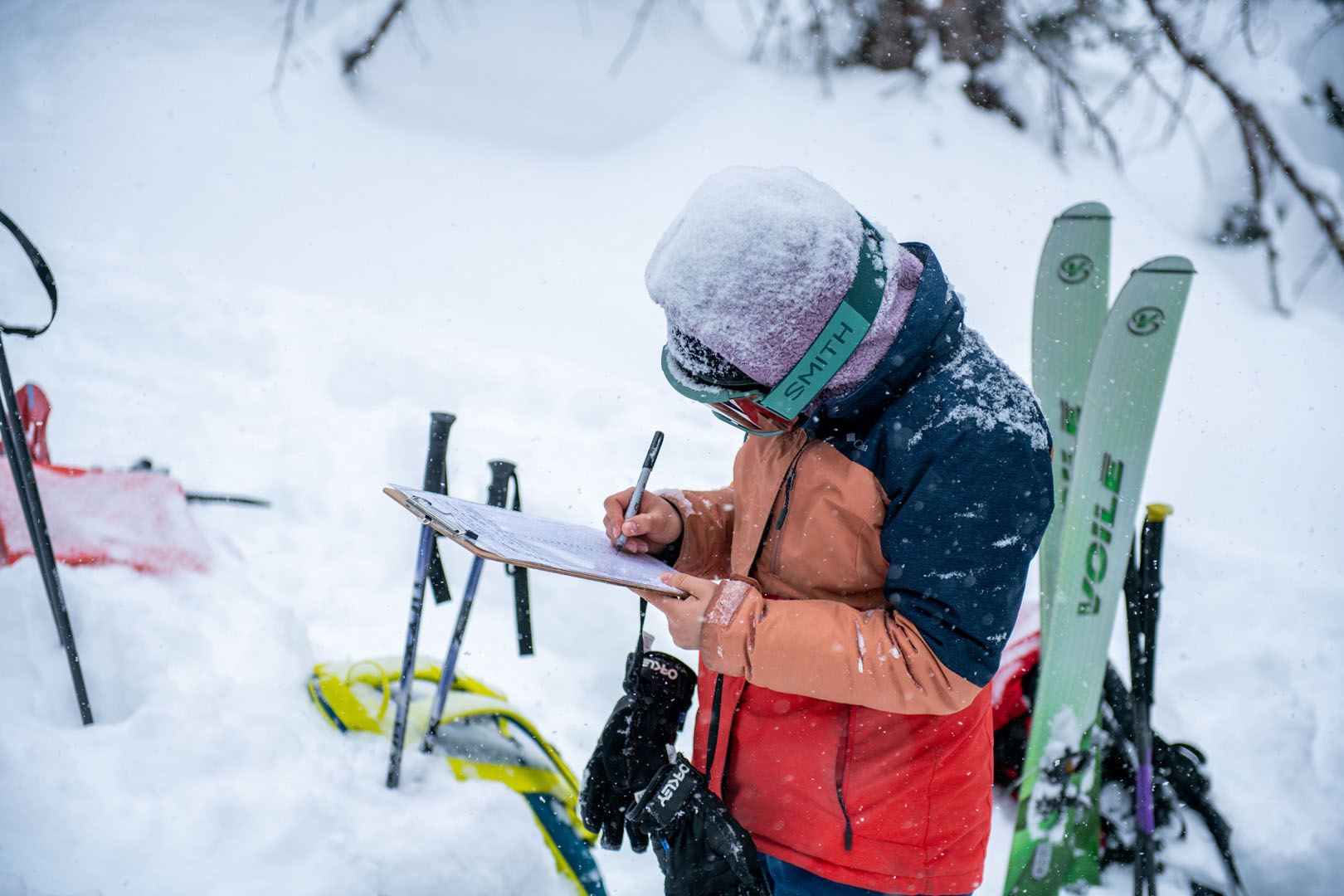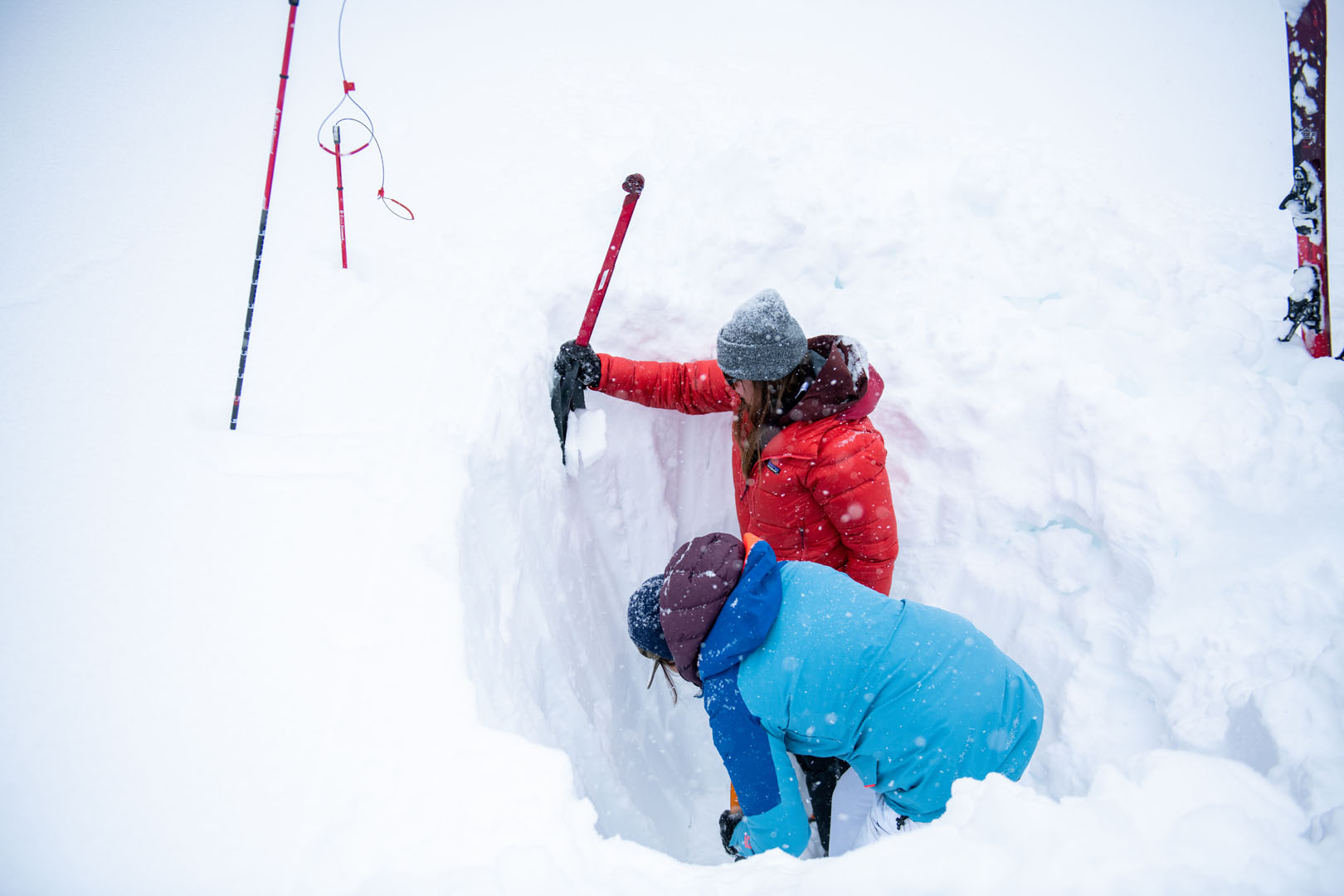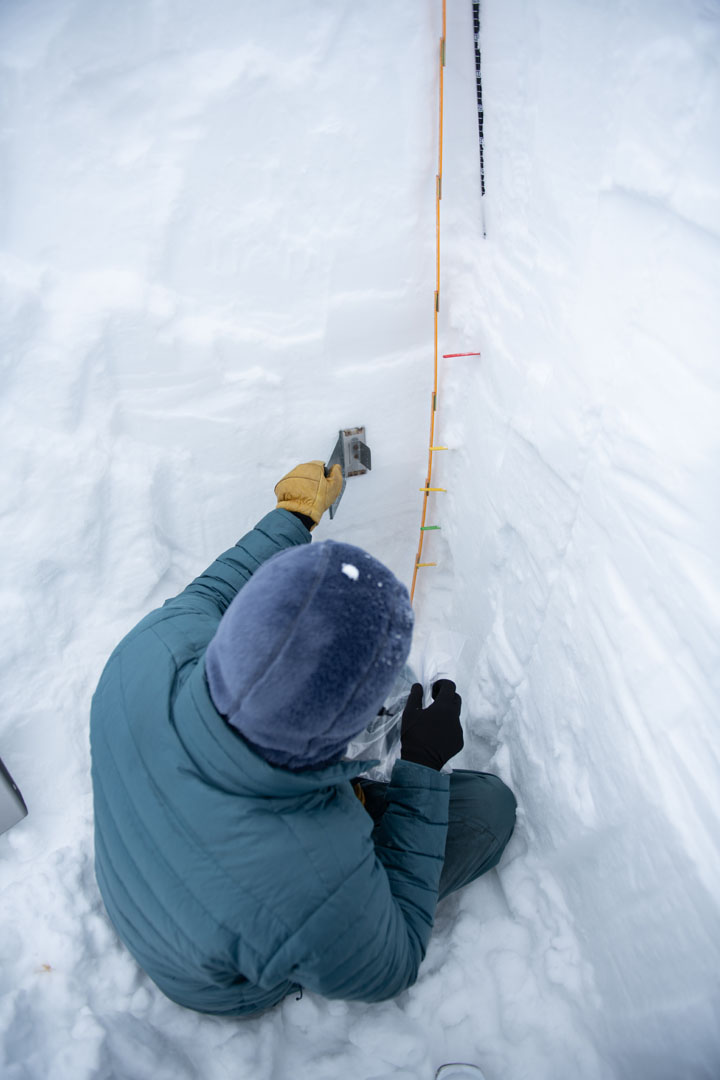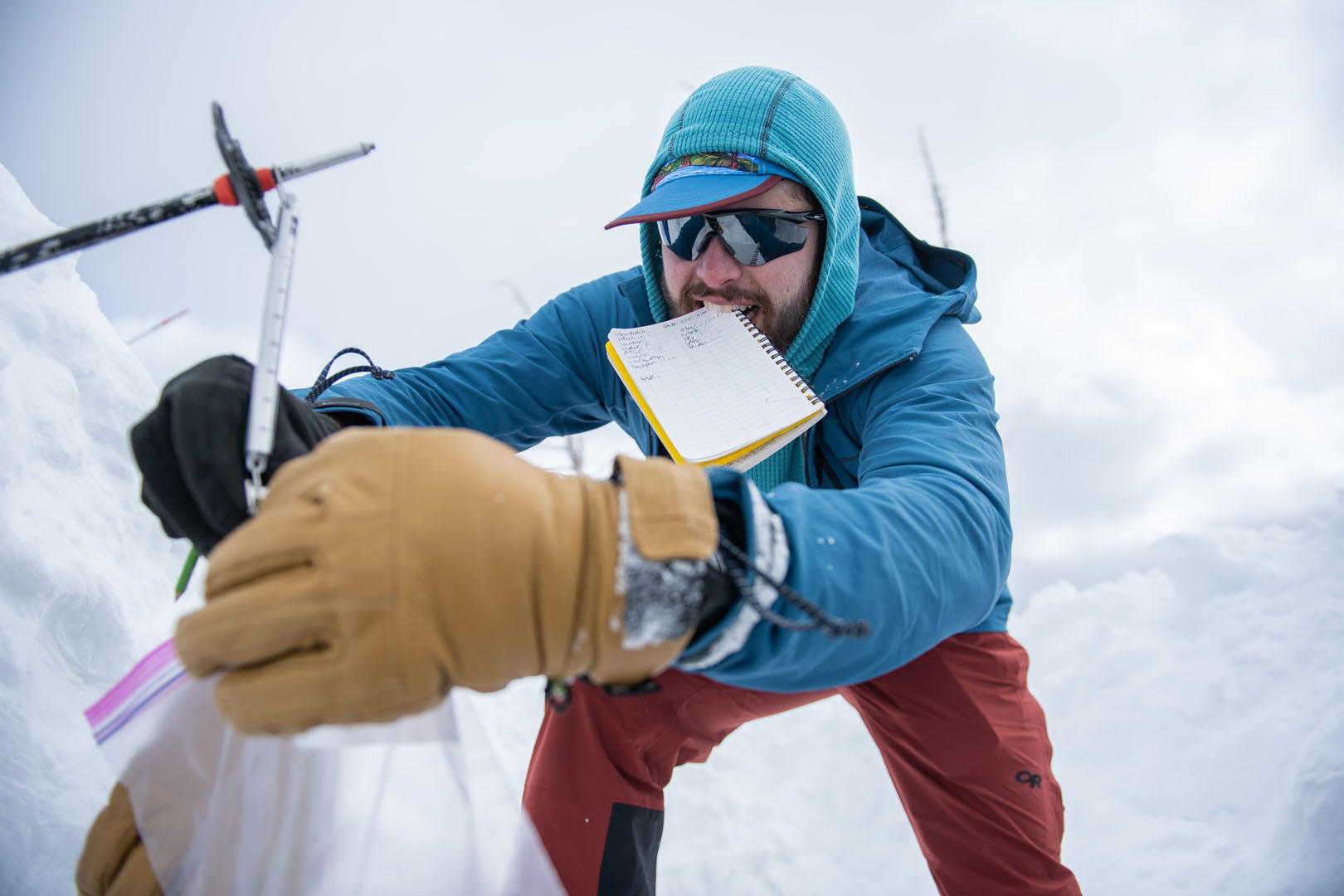Students in Topics in Chemistry: Snow Science Half Block course spent four days at Wolf Creek Pass, digging snow pits and collecting data to test their hypotheses. How can students afford this much time away from class? The Block Plan.
“Some version of this course might be possible on the semester system, but it wouldn’t be as focused and we’d likely truncate the field component to accommodate the semester scheduling,” says Eli Fahrenkrug, assistant professor in the Chemistry and Biochemistry Department.
“The amount of field time we got during the second week is impossible elsewhere. What other school can you spend four days in the mountains and snow, learning about the dynamics of the land around you?” says Reuben Alter ’24.
The theme of the class was scale, says Fahrenkrug. During the first two days of the class, the students started very small, with the molecular shape of water, and used that to rationalize everything from snow meteorology to the six-fold symmetry of snowflakes.
“Then we zoomed out to consider metamorphism, physical and chemical evolution, of snow on the ground. We discussed how distinct layers form in the snowpack, how they change, and how those layers interact via stress and strain relationships to yield large scale hazards like avalanches,” says Fahrenkrug. “By the end of the week, we moved from theoretical understanding to learning practical skills of evaluating snowpack stability in the field.” A snow meteorologist at the National Oceanic and Atmospheric Administration also spoke to the class during the first week.
“I learned a lot about the science behind avalanche safety and reporting, which was very interesting,” says Grace King ’23, a geology major enrolled in the class.
By the end of the first week, students were put into teams and tasked with developing their own snowpack-related research questions, which they tested during their field days at Wolf Creek Pass, Colorado. They then spend the second week of the course at Baca campus, which was their homebase while they traveled to Wolf Creek Pass during the day. Wolf Creek pass has an elevation of almost 11,000 feet and is in the San Juan Mountains. Students spent the time at Wolf Creek Pass digging snow pits and collecting data to test their hypotheses. On the last day of the class, students presented the results of their work.
King worked with Luca Keon ’25, Estie Seligman ’24, and Sasha Renton ’26 to study how certain features of a snowpack look different in treed areas versus open areas.
“One of our hypotheses was that we expected a lower temperature gradient in areas with more trees. We tested this by taking the temperature of the snowpack in both areas every 10cm and found our hypothesis to be supported,” says King.
“I took this course because one of my favorite things is knowing how the environment around me works, and a good chunk of that time is in the winter, snowy months,” says Alter, an organismal biology and ecology major and math minor.
One of Alter’s favorite parts of the class was learning about snowpack dynamics in relation to avalanche potential for the southern Rockies.
“It's definitely very advantageous to take this class on the Block Plan. Being able to go to the Baca campus and do a sustained investigation into the snowpack is the best way to take all the theoretical information we've learned and synthesize it where it's really happening and where we'll really be interacting with it in the future,” says Owen Cox ’24.
Cox couldn’t pick a single favorite part of the class because he says that it all fits together. “One significant thing we've learned is the way the temperature gradient from the ground to the air affects metamorphosis and stabilization/destabilization of the snowpack. Another is a variety of ways of assessing snowpack in the field to understand the history of its formation, its stability, and how it is likely to change in the future,” says Cox, a physics major with an emphasis in astrophysics.
Cox’s group researched how wind loading, scouring, and sun exposure change can change a snowpack over time.
At the start of the class there was a 26-person waitlist, and at one point, there was a 40-person waitlist, which Fahrenkrug says was about the same last year. Fahrenkrug taught this class as a Half Block last year for the first time, and since there’s such a robust demand for the course, he is working to adapt it to a full block class.
“We’re pretty ideally and uniquely positioned and resourced to teach a course like this at CC,” says Fahrenkrug.
“I wanted to take snow science because I spend a lot of time interacting with snow through ice climbing and backcountry skiing, so I wanted to understand it better. It's also just such a beautiful thing we see all the time that I think generally is not very well understood,” says Cox.
Wolf Creek Pass was chosen for several reasons, including that historically it has one of the deepest early season snowpacks in the state. “Lots of snow is great for a snow science course! This year is no exception with about 60 inches deposited in the week before our departure. For comparison, the snowpack on Pikes Peak is far too thin until March or April for a class like this,” says Fahrenkrug.
“I think this class is absolutely a testament to the strengths of the Block Plan and I cannot imagine it being taught on a semester schedule. We can talk about snowpack stability and snow grain identification in the classroom all day, but in my experience, it never really clicks until you’re in a pit and can watch a Rutschblock test slide or you spend an hour staring through a loupe at a bunch of crystals in various forms and try and decipher what they are. In a semester-based system with students and professors balancing other classes, we wouldn’t be able to load up the vans and spend three days digging pits in the deepest snowpack in Colorado. There is something so very special about immersing yourself in a subject, and when you’re out in the field and can give 100% of your time and thought to a subject for days on end, it leads to a deeper and richer style of learning that I don’t see as possible in most other colleges,” says Matthew Silverman ’23, one of the teaching assistants for this course.
The other teaching assistants were Niko Linder ’23, Julian Slesar ’25, and Zoe Grumbach ’25.



